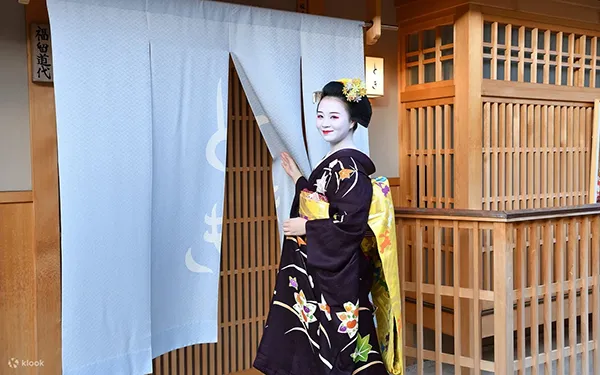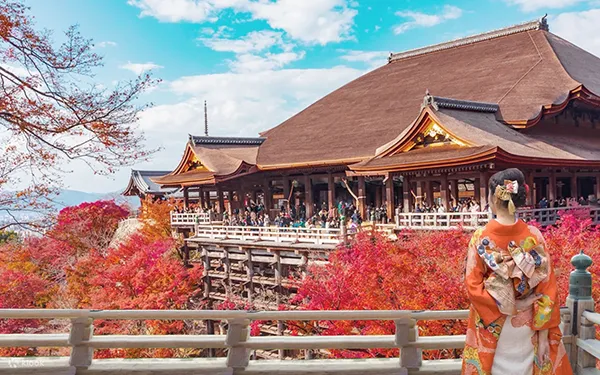Hello everyone.
Suddenly, have you ever heard of an instrument called the shamisen?
Today, I’d like to introduce you to one of Japan’s most iconic traditional instruments — the shamisen.
What Is a Shamisen?
The shamisen (三味線) is a traditional Japanese instrument with three strings, a long neck, and a sound box covered in skin. It’s often compared to a banjo, but its tone is uniquely Japanese — both sharp and emotional. Played with a large plectrum called a bachi, the shamisen creates sounds that can be both gentle and powerful, often expressing deep feelings in Japanese music and theater.
A Brief History
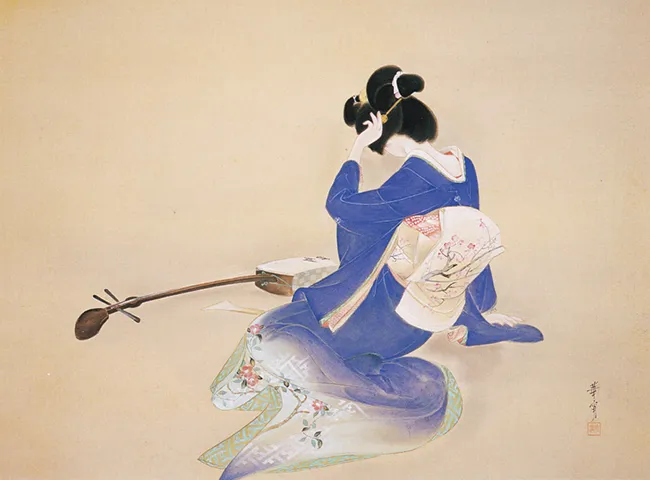
The shamisen originated in the 16th century, inspired by a Chinese instrument called the sanxian. It first became popular in Osaka and Kyoto among entertainers and theater performers. Over time, it spread across Japan and became a core part of traditional performing arts like kabuki (classical theater) and bunraku (puppet theater).
It’s also commonly heard in geisha performances and folk songs (min’yō) from different regions of Japan.
Parts of the Shamisen
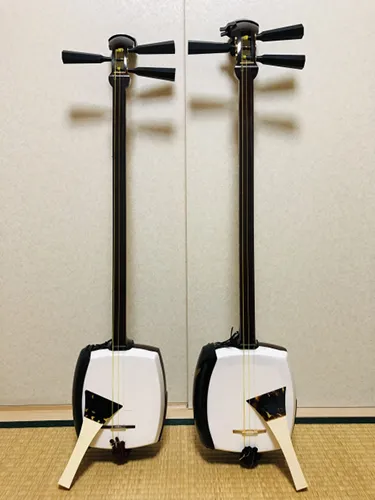
The shamisen may look simple at first glance, but each part has a special role that affects its sound and style. Here’s a quick breakdown of its main components:
- Dō (Body) – The square-shaped sound box that acts as the instrument’s resonator. It’s traditionally made from wood and covered with animal or synthetic skin to create that distinct sharp tone.
- Kawa (Skin) – The surface of the body, usually made from cat, dog, or synthetic material. The tension and material greatly influence the shamisen’s sound — tighter skin means a brighter, louder tone.
- Sao (Neck) – The long wooden neck where players slide their fingers to change pitch. It’s smooth and fretless, allowing for expressive glides between notes.
- Itomaki (Tuning Pegs) – The large tuning pegs at the top of the neck, used to tighten or loosen the three strings. They’re often made from ebony or ivory and are turned by hand.
- Ito (Strings) – The shamisen has three strings, usually made of silk or nylon. Each string has a specific role in producing melody, rhythm, and harmony.
- Koma (Bridge) – A small removable piece placed between the skin and the strings. It lifts the strings slightly and helps transfer vibrations to the body.
- Neo (Cord) – A decorative cord tied to the lower part of the shamisen, holding the strings in place. It’s often colorful and adds a touch of personality to the instrument.
- Bachi (Plectrum) – The large pick used to pluck the strings. Its shape and material (plastic, ivory, or wood) greatly affect the playing style and tone.
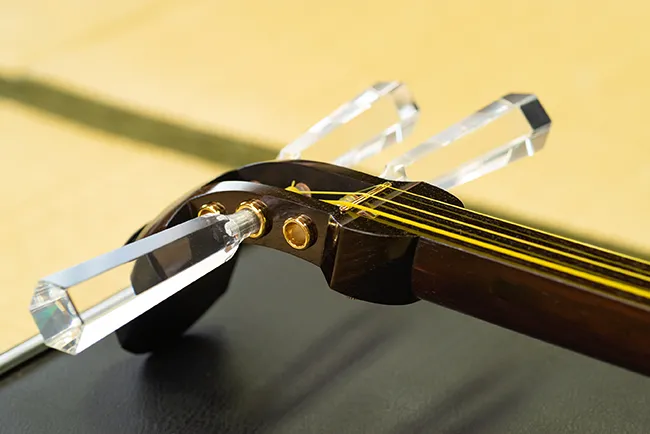
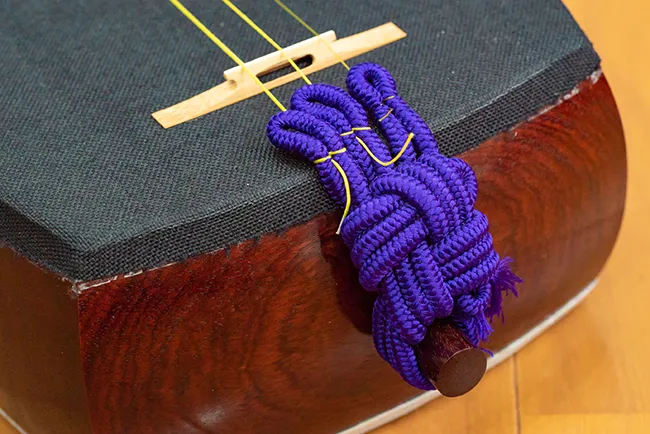
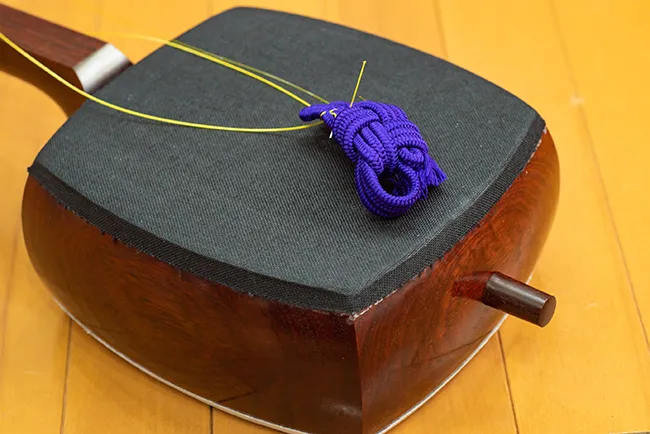
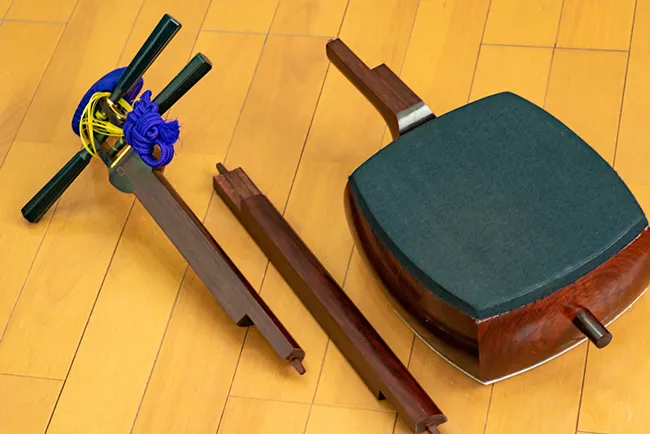
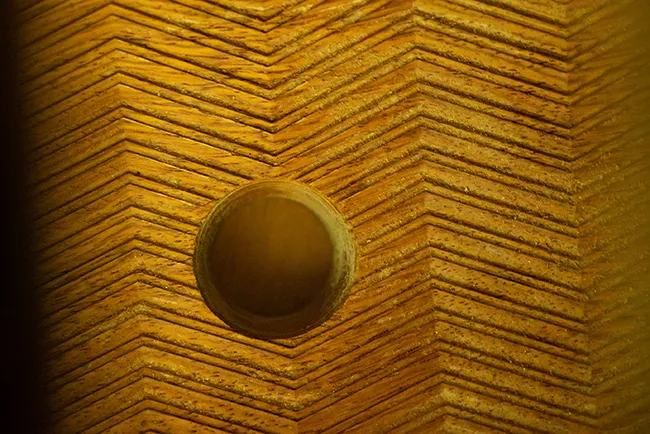
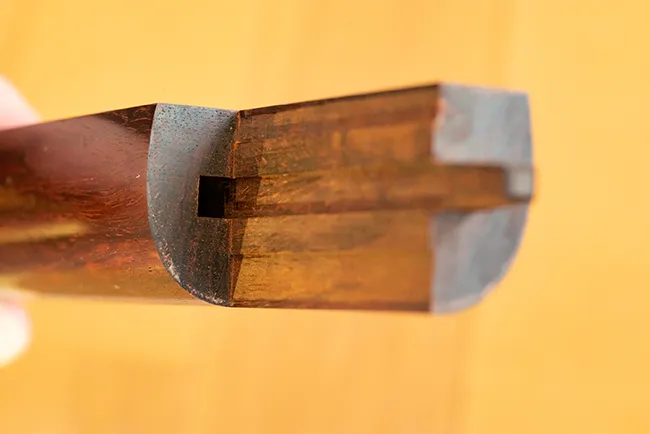
Each part works together to create the shamisen’s unique sound — a balance of resonance, tension, and expression that makes it one of Japan’s most iconic instruments.
Materials and Craftsmanship
Traditionally, the shamisen’s body (dō) is made from high-quality wood such as red sandalwood or mulberry. The surface is covered with animal skin — usually cat or dog — though many modern shamisen now use synthetic skins for ethical and durability reasons.
The neck (sao) is long and slender, allowing for smooth sliding techniques that give the shamisen its distinctive sound.
Types of Shamisen
There are several types of shamisen, each used for a different style of music:
- Tsugaru Shamisen – Known for energetic, improvisational performances from northern Japan.
- Nagauta Shamisen – Often used in kabuki theater.
- Jiuta Shamisen – Used in more classical, chamber-style music.
Each type varies slightly in size, tone, and playing technique.
The Sound and Its Beauty
The shamisen’s sound is expressive — it can cry, laugh, or even shout. Players often “snap” the strings to create percussive accents, blending rhythm and melody in one instrument.
Its tone is sometimes described as nostalgic or soulful, evoking emotions that words can’t quite express.
Where You’ll Hear It
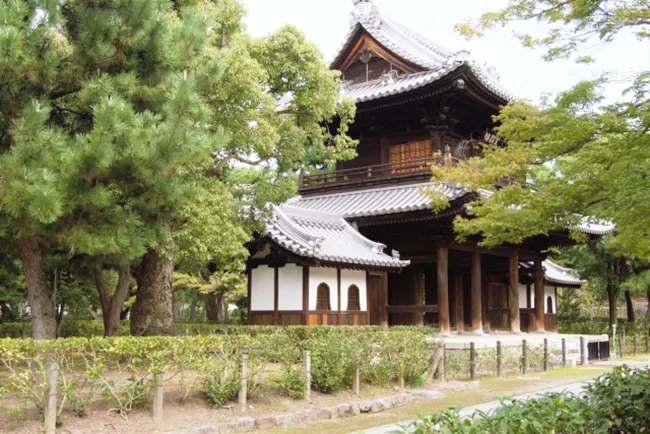
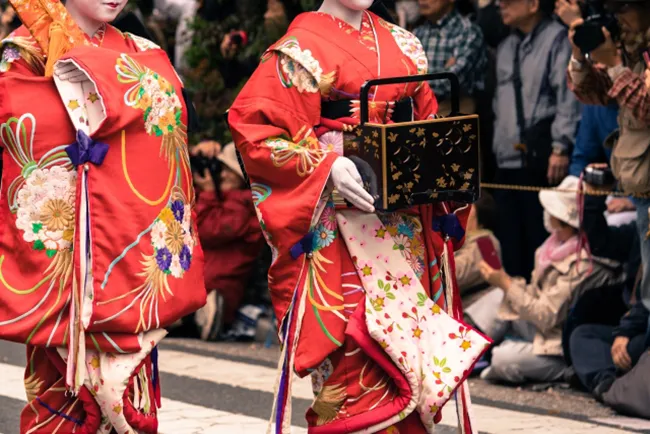
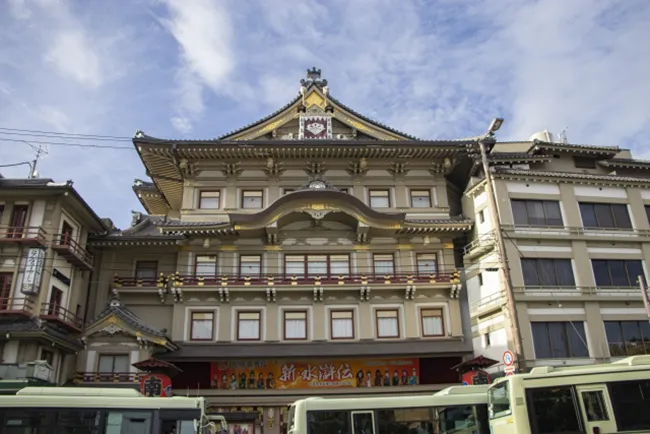
You can experience shamisen music in:
- Kabuki and Bunraku theaters
- Traditional Japanese festivals
- Tea houses and cultural performances
- Modern fusion bands, where the shamisen meets rock, jazz, or pop
Musicians like Yoshida Brothers have brought shamisen to global stages, showing its versatility even in modern genres.
Buying a Shamisen

A beginner-level shamisen can cost around $500–$1,000 USD, while high-end handcrafted ones can reach $5,000 or more.
If you’re in Japan, music stores in Tokyo, Kyoto, or Osaka often carry them, and some even offer trial lessons.
Online, sites like Tokyo Wagakki or Etsy have shamisen listings — but make sure to check the materials, since traditional skins may be restricted in some countries.
In Conclusion
The sound of the shamisen is often used in videos that introduce Japan. You’ve probably heard it at least once. Conversely, when you hear the sound of the shamisen, it instantly brings to mind images of traditional Japan.
It’s a bridge to Japanese history, art, and emotion.
Its sound has survived centuries, yet still feels alive and fresh.
Whether you see it performed live or try playing it yourself, you’ll understand why this three-stringed instrument continues to fascinate people around the world.
Thanks for reading!



